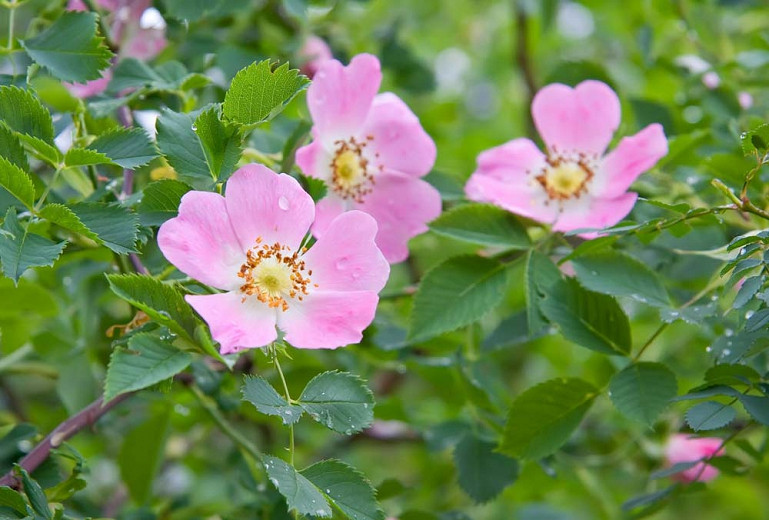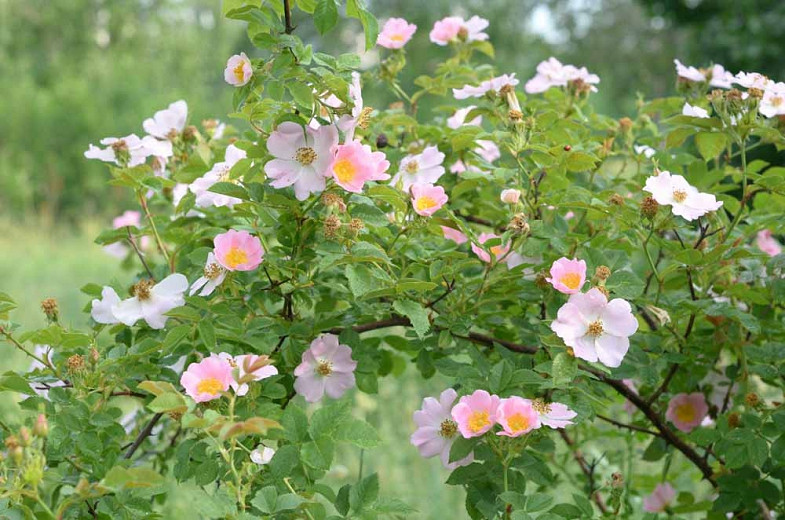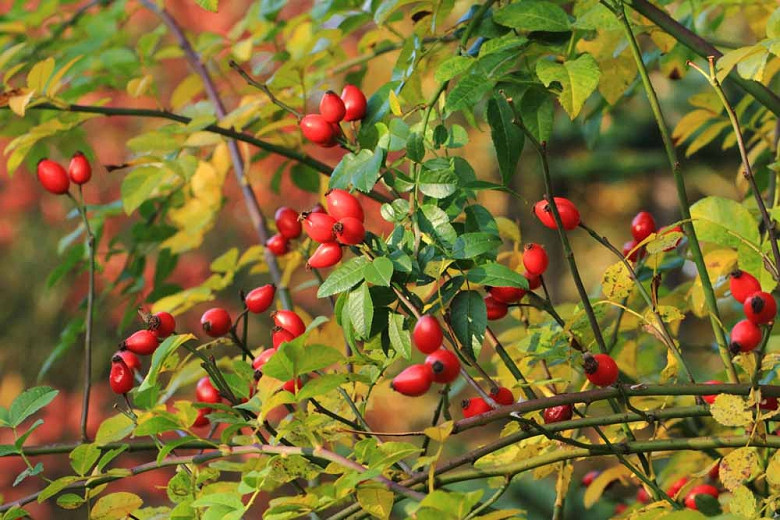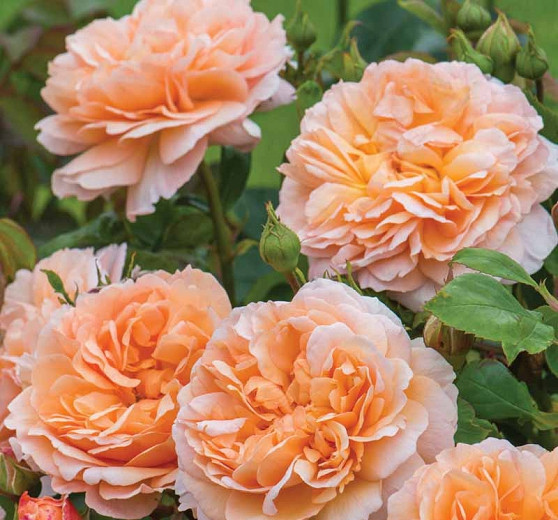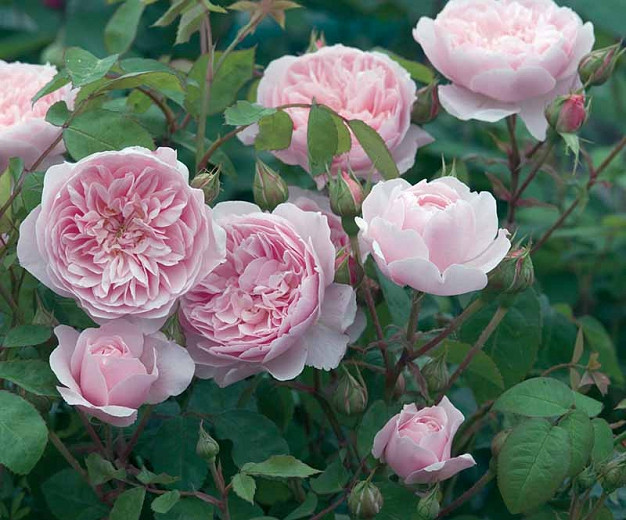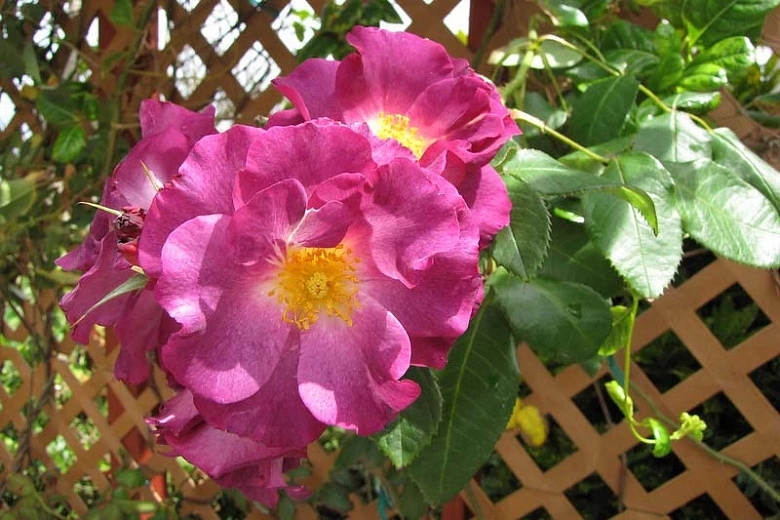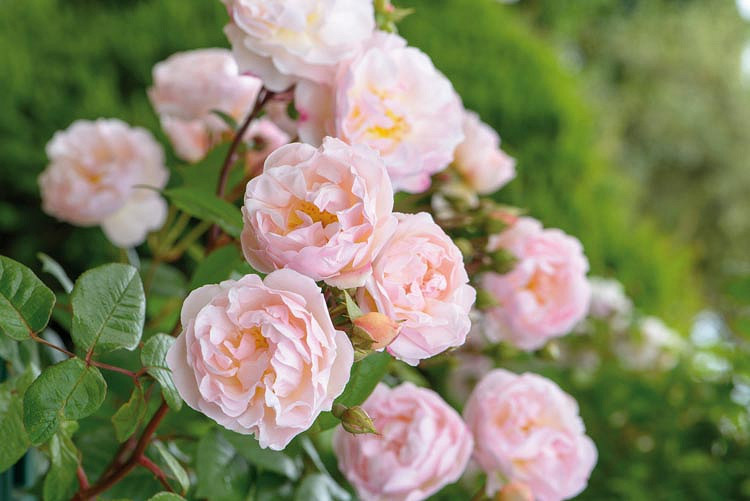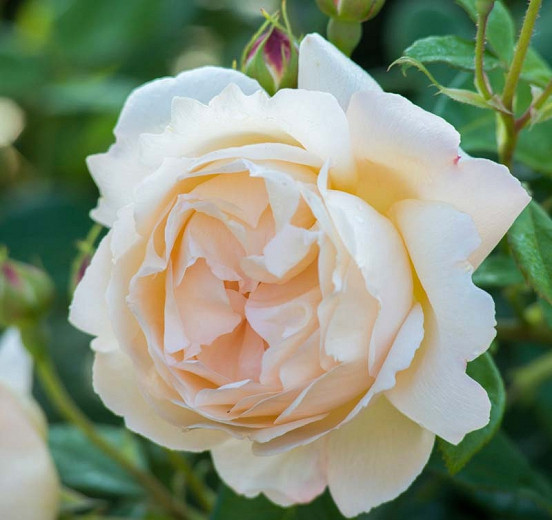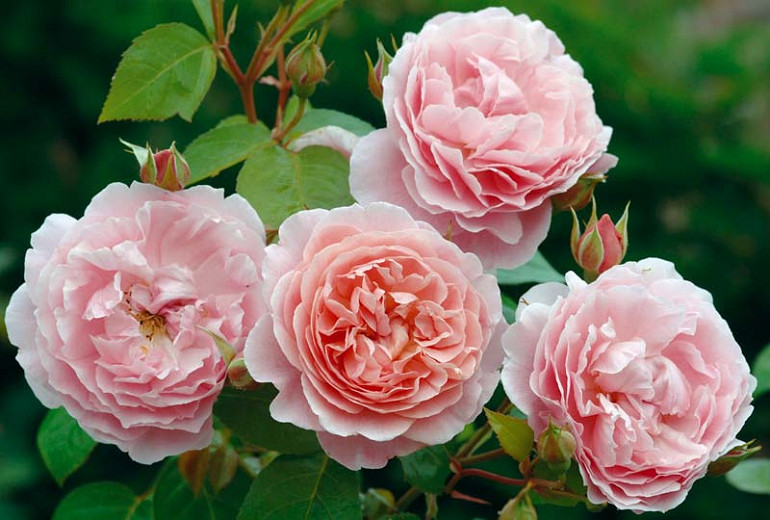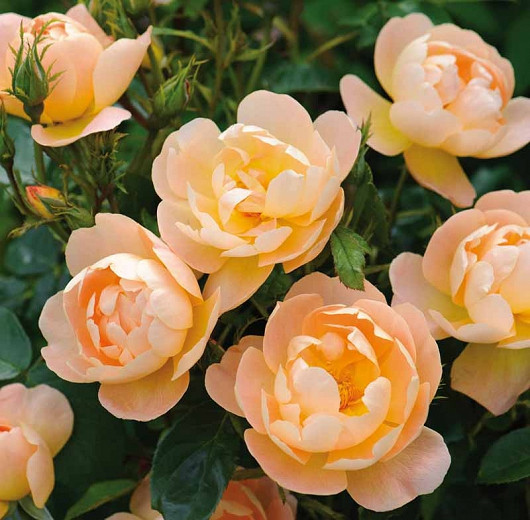Rosa canina (Dog Rose)
Tough and fast-growing, Rosa canina (Dog Rose) is a vigorous, scrambling, deciduous shrub with multiple arching stems covered with stout, curved thorns and pinnately divided, serrated, mid-green leaves. In late spring to midsummer, lightly scented, pink-flushed, white flowers, 2 in. across (5 cm), are produced at the end of the branches, either solitary or in small clusters.
Tough and fast-growing, Rosa canina (Dog Rose) is a vigorous, scrambling, deciduous shrub with multiple arching stems covered with stout, curved thorns and pinnately divided, serrated, mid-green leaves. In late spring to midsummer, lightly scented, pink-flushed, white flowers, 2 in. across (5 cm), are produced at the end of the branches, either solitary or in small clusters. They are followed by abundant, glossy, bright red fruits that persist for several months – unless hungry birds happily feast on them. Tolerant and undemanding, Dog Rose is a lovely addition to a wildlife garden and makes an informal and impenetrable hedge, thanks to its prickly stems.
- Grows up to 3-15 ft. tall and wide (90-450 cm). Rosa canina reproduces sexually by seed, and vegetatively by suckering and layering.
- Best grown in full sun, in humus-rich, moist, well-drained soils. Tolerant of poor soils. For best flowering, apply a balanced fertilizer and mulch in late winter or early spring.
- Perfect for cottage gardens, and wildflower meadows.
- Watch for rose rust and powdery mildews. May be affected by aphids, leafhoppers, glasshouse red spider mite, scale insects, caterpillars, and rose leaf-rolling sawfly
- Attractive to pollinating insects, butterflies, and birds
- Propagate by hardwood cuttings in autumn.
- Native to Europe, North Africa, and Southwestern Asia. Planted in landscaped settings in the U.S. and Canada, this Eurasian species has escaped cultivated gardens and become problematic in natural areas. Areas invaded with Dog Roses can become dominated by the plant, resulting in a decline in native plant species and other desirable vegetation. Gardeners should consider its invasive nature before planting.
- Find where this species is invasive in the United States.
- Discover beautiful U.S. native plant alternatives.
Requirements
| Hardiness | 5 – 9 |
|---|---|
| Plant Type | Roses, Shrubs |
| Plant Family | Rosa – Shrub Roses, Rosa – Roses |
| Exposure | Full Sun |
| Season of Interest | Spring (Late)Summer (Early,Mid)FallWinter |
| Height | 3' – 15' (90cm – 4.5m) |
| Spread | 3' – 15' (90cm – 4.5m) |
| Spacing | 144″ (360cm) |
| Water Needs | Average |
| Maintenance | Average |
| Soil Type | Chalk, Clay, Loam, Sand |
| Soil pH | Acid, Alkaline, Neutral |
| Soil Drainage | Moist but Well-Drained |
| Characteristics | Fragrant, Showy, Fruit & Berries |
| Native Plants | United Kingdom |
| Attracts | Birds, Butterflies |
| Garden Uses | Beds and Borders, Hedges and Screens |
| Garden Styles | Informal and Cottage, Prairie and Meadow |
